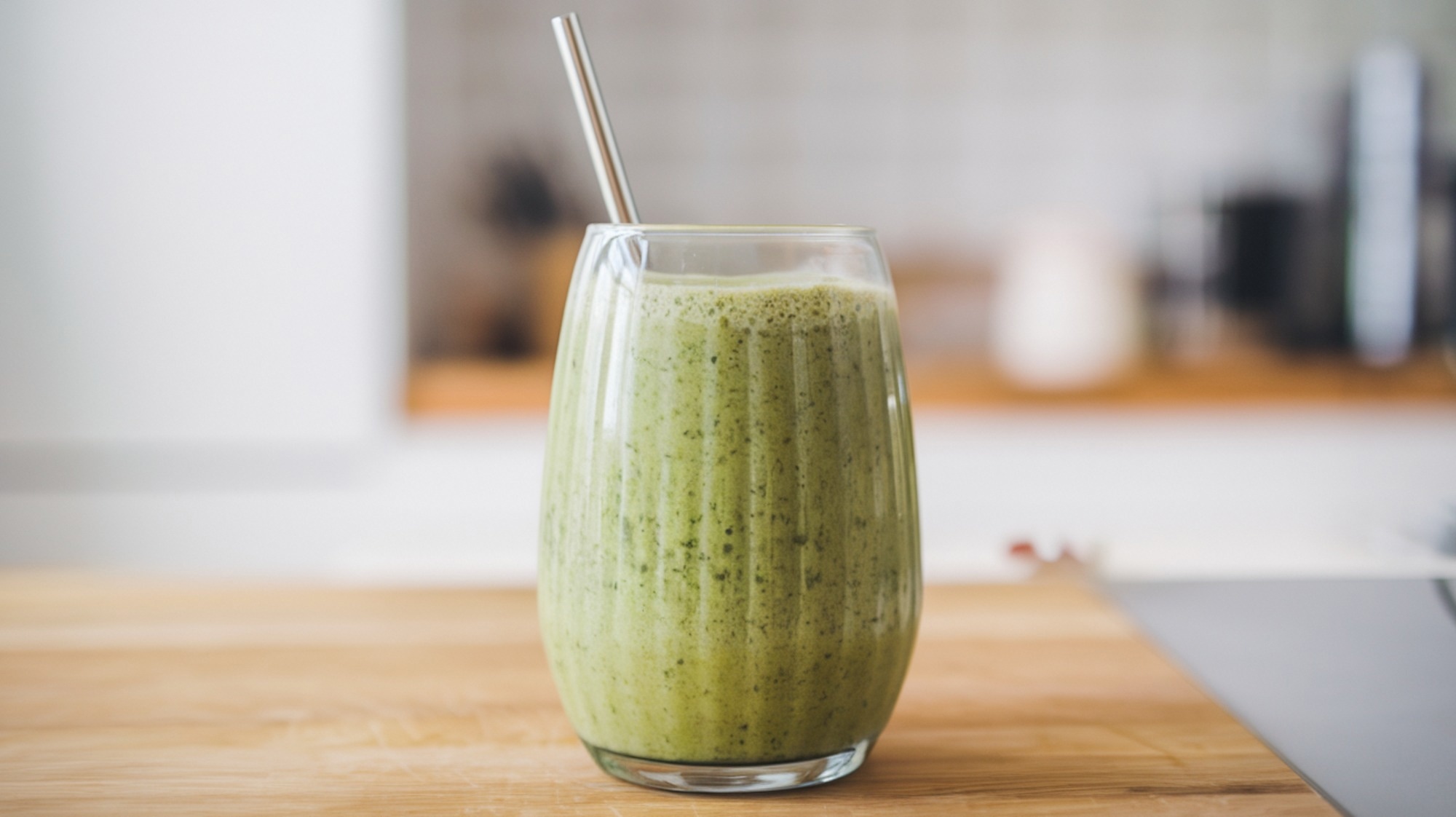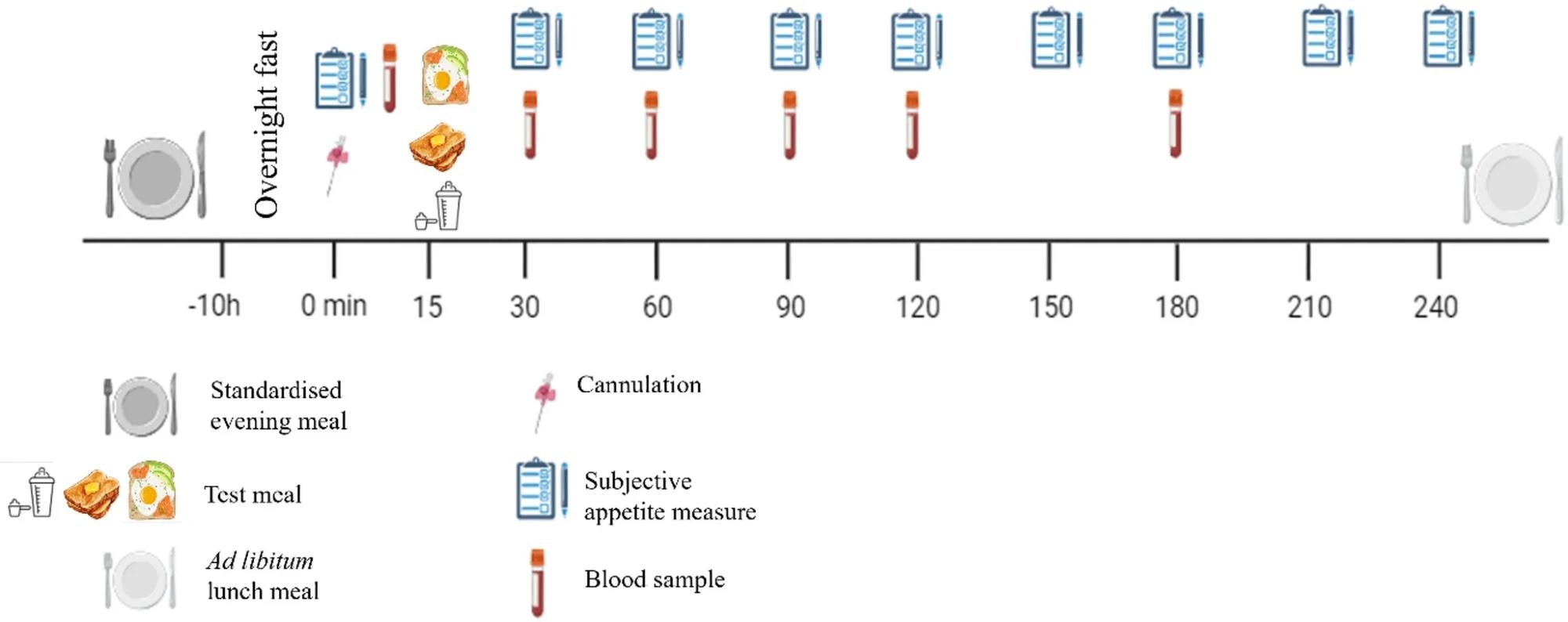A plant-based drink and an animal-based meal triggered similar satiety hormone responses and small appetite reductions after breakfast, yet neither changed how much participants ate at lunch, suggesting that increasing protein at breakfast may support satiety without automatically reducing total energy intake.

Study: The effect of consuming different dietary protein sources at breakfast upon self rated satiety, peptide YY, glucagon like peptide-1, and subsequent food intake in young and older adults. Image Credit: Muhammad Umair132 / Shutterstock
In a recent study published in the European Journal of Nutrition, researchers at Newcastle University, UK, investigated the impact of consuming different protein sources at breakfast on adults' subsequent hunger and food consumption, as well as the regulation of associated hormones.
Their findings indicate that high-protein breakfasts, both plant-based and animal-based, elicited stronger satiety hormone responses and appetite suppression, which was significant for the plant-based drink and trending for the animal-based meal. However, neither influenced the total energy consumed during the afternoon meal.
Sustainability and Protein Source Implications for Appetite
Adequate protein intake is vital for health, but environmental and ethical concerns are driving interest in sustainable, plant-based alternatives.
The Food and Agriculture Organization promotes alternative proteins as part of its global sustainability goals, leading to growth in plant-based foods and drinks.
Protein source can influence digestive, metabolic, and appetite responses, as amino acids stimulate satiety hormones such as peptide tyrosine tyrosine (PYY) and glucagon-like peptide 1 (GLP-1) while suppressing ghrelin.
Studies comparing protein types have yielded inconsistent results; some find that casein or pea proteins are more satiating than soy, while others report stronger effects for whey.
Plant- and animal-based meals may also differ in their ability to trigger gut hormone release, with outcomes varying by population and protein form. Liquids typically reduce appetite less than solid foods, though this difference in relation to protein source remains unclear.
In the UK, most adults meet their protein recommendations, but older adults may require more due to a reduced appetite and an increased risk of muscle loss. Since breakfast tends to be low in protein, it offers an opportunity to enhance intake.
This study aimed to compare the effects of plant-based and animal-based high-protein breakfasts with a low-protein control on appetite, satiety hormones, and energy intake in younger and older adults.
Controlled Crossover Design for Breakfast Interventions
Researchers employed a randomized, within-subject, crossover design, in which 18 healthy adults, comprising 12 between 18 and 35 years old and 6 over 65, participated in three breakfast conditions: a plant-based, high-protein drink, an animal-based, high-protein breakfast, and a low-protein, high-carbohydrate breakfast.
Each meal was energy-matched, with the high-protein treatments containing 30 g of protein. However, the plant-based drink contained more fiber at 7.8 g than the animal-based meal at 4.5 g. Participants attended the laboratory in a fasted state after consuming a standardized evening meal and avoiding caffeine, alcohol, and exercise.

Schematic of study protocol
Appetite Measurements and Hormone Sampling Procedures
Appetite was measured using visual analogue scales at baseline and at regular intervals for four hours after breakfast, while blood samples were collected at specific time points to measure plasma PYY and GLP-1 concentrations. After the final blood draw, participants consumed an ad libitum pasta lunch to assess energy intake.
Statistical analyses employed mixed models to evaluate the effects of treatment, time, and age group, while controlling for baseline values. Pairwise comparisons with Bonferroni correction were applied where significant effects were found. Associations between appetite, hormone levels, and energy intake were examined using repeated measures correlation analysis.
Hormonal and Appetite Responses to Protein Type
Both plant-based and animal-based high-protein breakfasts produced stronger satiety hormone responses than the low-protein, high-carbohydrate meal.
GLP-1 levels were significantly higher after both high-protein meals compared with the control, with no difference between the two protein types. Similar patterns were observed for PYY, which increased significantly after the high protein meals compared with the control, again showing no difference between protein sources.
Subjective appetite ratings were significantly lower following the plant-based protein drink and showed a trend toward reduction after the animal-based meal compared with the low-protein meal. However, these differences were modest and mostly below the 15 mm threshold considered necessary to influence eating behavior meaningfully. Energy intake at the ad libitum lunch did not differ between treatments, and no age-related effects were observed.
Correlation analyses showed that subjective appetite was positively associated with subsequent energy intake. Unexpectedly, GLP-1 and PYY levels showed weak, positive associations with energy intake; however, this represented only a statistical trend, with p values of 0.074 and 0.078, respectively, and was not significant at the 0.05 level.
Within participants, no associations were found between changes in hormone levels, appetite, or energy intake. Overall, both high-protein breakfasts promoted greater satiety hormone responses and appetite suppression than the low-protein meal, but did not affect later food intake.
Comparing Plant-Based and Animal-Based Satiety Effects
This study found that plant- and animal-based high-protein breakfasts similarly enhanced satiety hormones GLP-1 and PYY, and reduced appetite, compared with a high-carbohydrate, low-protein meal, with no difference observed between protein sources or age groups.
Although the plant-based drink appeared to produce slightly quicker hormonal responses, a tentative observation the authors suggested might be due to faster gastric emptying of liquids, these effects did not translate into reduced energy intake at lunch.
The comparable responses indicate that plant-based proteins can effectively replace animal proteins in supporting satiety without affecting subsequent calorie intake. Strengths of this analysis include a controlled, crossover design and inclusion of older adults.
Limitations include the small size of the older adult subgroup and the absence of solid plant-based and liquid animal-based conditions, which limit the ability to isolate the effects of protein form and source. Moreover, the study was not statistically powered to detect age differences, which increases the risk of overlooking true age-related effects.
Implications for Sustainable and Practical Breakfast Protein Strategies
In conclusion, a plant-based, high-protein drink appears to be a practical and sustainable alternative for increasing protein intake without affecting later eating behavior. However, future studies are needed to assess the long-term acceptability of these dietary interventions and the real-world applications of these findings.